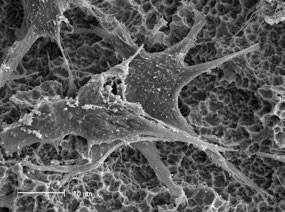
SLA® – LONG-TERM SCIENTIFIC EVIDENCE
- High and consistent survival rates between 95.1 % and 98.8 %
documented by different studies after 5- and 10-year follow-ups3-9 - Very low prevalence of peri-
implantitis (1.8 %) over the 10-year follow-up period4 - Average bone loss of 0.5 – 1 mm after 10 years (baseline defined as implant loading time)4,5